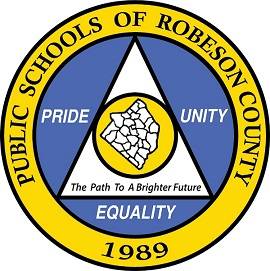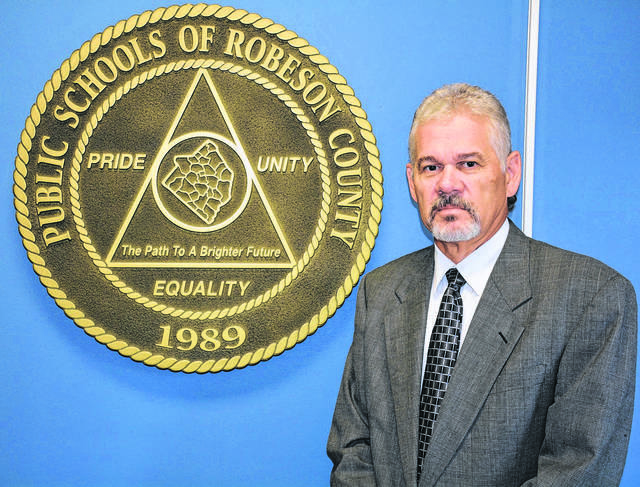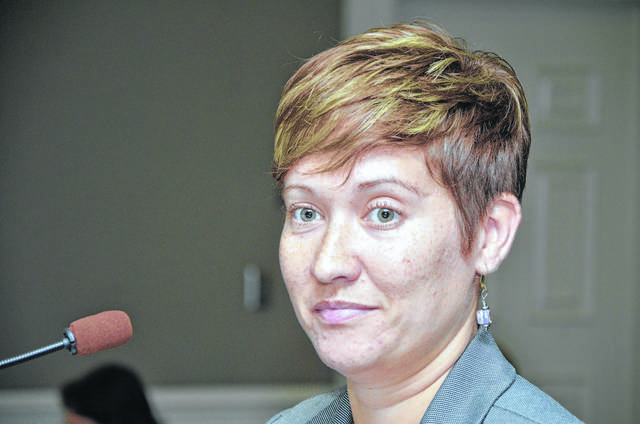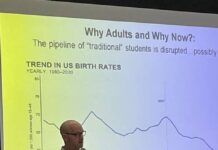LUMBERTON — Public Schools of Robeson County’s Board of Education members approved moving forward with summer school plans to help students recover from a year of learning during a global pandemic.
Board members also approved allowing staff to move forward with planning and preparations for PSRC Summer Learning and Enrichment Camp and to submit plans for the camp to the N.C. Department of Public Instruction.
The summer program is to comply with House Bill 82, known as the Summer Learning Choice for NC Families, which compels schools across the state to offer learning recovery and enrichment programs to aid students affected by COVID-19’s impact on the educational system.
The school district’s plan is to be submitted to DPI no later than 30 days before the end of school, which is May 28, said Sandra Evans, K-8 Curriculum supervisor. The plan must contain information such as budget and compensation plans, access to modules, course details and more.
Students who are enrolled in prekindergarten through grade eight will attend sessions from June 14 to June 24 and July 6-29. High school students can attend sessions June 7-30 and July 6-29 and will be given a flexible schedule to allow them to continue meet other responsibilities, like working at summer jobs.
i-READY assessments will be given before and after the program to gauge proficiency, Evans said. A Read to Achieve assessment will be administered afterward to third-graders as an alternative proficiency gauge. Principals also will review progress as the decisions about whether or not to promote students to the next grade level are made after the program.
There were 1,178 students registered for the summer program as of 5 p.m. Tuesday, Evans said.
Paper forms will be sent to parents to allow them to register students, she added. Classes will have a 10-1 student to teacher ratio.
Incentives are being offered to help recruit staff members to work during the summer.
“Our goal is to employ the best of the best, the most qualified teachers who can provide the best instruction for our children,” said Melissa Thompson, assistant superintendent of Human Resources.
“We want kids to catch up as much as possible in six weeks,” she added.
Teacher’s Education Value-Added Assessment System scores, along with principal input, will play a role in teachers hired for the program. The EVAAS is part of the North Carolina Educator Evaluation System to determine effectiveness of student learning and teaching of certain courses, according to NCDPI.
Signing bonuses of $1,200 are available for any teacher who has received a past teaching bonus for Reading in grades three through five or Mathematics in grades four through eight. Teachers who have obtained a National Board for Professional Teaching Standards Certification also are eligible for the stipend, according to the teacher recruitment plan.
A performance bonus of $150 also will be offered to teachers for each student in third grade who was not considered proficient in reading but measures proficient after the program.
Other compensation rates include $60 per hour for site coordinators; $50 for certified teachers, social workers, counselors, and Exceptional Children Services; $30 per hour for teacher assistants and cafeteria managers; and $25 per hour for cafeteria workers and bus drivers.
District staff members who work 12 months a year will not be able to collect the pay, but will continue receiving their salaries. However, 10-month staffers, like teachers who have elected to spread payments across 12 months, will get two checks, with one being the summer school payment for participating in the program, said Erica Setzer, PSRC chief Finance officer.
Setzer said the Elementary and Secondary School Emergency Relief Fund will be used to pay for the summer school program, which in preliminary figures for staff members already exceeds $10 million. A budget has not yet been created for the program, but meetings concerning it will be underway soon.
The funding is part of the Education Stabilization Fund established by the Coronavirus Aid, Relief, and Economic Security Act, according to the Office of Elementary and Secondary Education.
The PSRC received a total of $155,983,421 in ESSER funds, with $19,985,964 allocated specifically for learning loss, Setzer said.
Plans for spending more than $163.7 million from the CARES Act, Coronavirus Response and Relief Supplemental Appropriations Act and American Rescue Plan Act are still being formulated, Setzer said. Ideas being considered include updating HVAC systems and installing touchless water fountains.
School Board Chairman Craig Lowry said air quality in the school district’s aging school buildings was a main concern for many people when COVID-19 surfaced.
“I’m glad we’re looking at that,” Lowry said.
Board members also heard a technology update from Everette Teal, director of Technology at PSRC.
Teal said antennas have been placed in schools in St. Pauls and Red Springs to improve wireless connectivity. Workers are making their rounds to other schools and will soon be in the Lumberton area.
The department is in phase one of plans to boost signal and internet connectivity, he said. Currently, the antennas can send a signal out to areas 3/4 of a mile away. Some challenges include signal interference from solar panels and other barriers in the communities.
He mentioned AT&T’s efforts to put up seven towers and Verizon’s installation of four to help with connectivity issues.
School Board Member Henry Brewer said the additional internet boost could mean PSRC spends less on operations, like hot spot devices.
The school system’s 4,600 hotspots cost about $480,000, Teal said. Donations and grants helped secure that funding. He also said 12,182 Chromebooks are in Minnesota and should arrive soon. Once they arrive, the Technology Department and superintendent’s Cabinet can decide on allocation of the devices.
Also approved on Tuesday was the plan presented by Setzer that encourages employees who spread their payments over a 12-month period to collaborate with their financial institutions for summer cash options starting in August.
The NCDPI no longer uses the option to spread money over summer months for 10-month employees, she said. Employees will earn their gross salary from August to May beginning the next school year.
“Everything will stay the same over the summer,” Setzer said.
She recommends offering the 1,647 employees that use the 12-month payment option to make arrangements with banks for allocating funds to use during the summer. Of those employees, more than 1,100 use the credit union. For that reason, Setzer said employees will have the option to open an account with the credit union for that purpose.
Setzer said she plans to participate in a webinar to allow teachers to contact her with any questions regarding summer payment.
In other matters, school board members scheduled a Policy Committee meeting for 2 p.m. May 4 and a Finance Committee meeting to follow at 6 p.m.
Finance Committee Chairman Mike Smith said he would like to discuss custodian allocations at schools. Smith and Board member Linda Emanuel voiced their concerns about appropriate custodian allocations in schools across the district.
Melissa Thompson, assistant superintendent of Human Resources, said she would find a previous list and work with PSRC Maintenance Director Earney Hammonds to provide an updated version for board members.
Public comments were received, but not read aloud. Comments are posted in Board Minutes, which can be found on the website by clicking the Explore tab, Documents Tab, and Board of Education Tab on the PSRC website.
The next Board meeting is scheduled for 6 p.m. May 11.
Reach Jessica Horne at 910-416-5165 or via email at [email protected].











